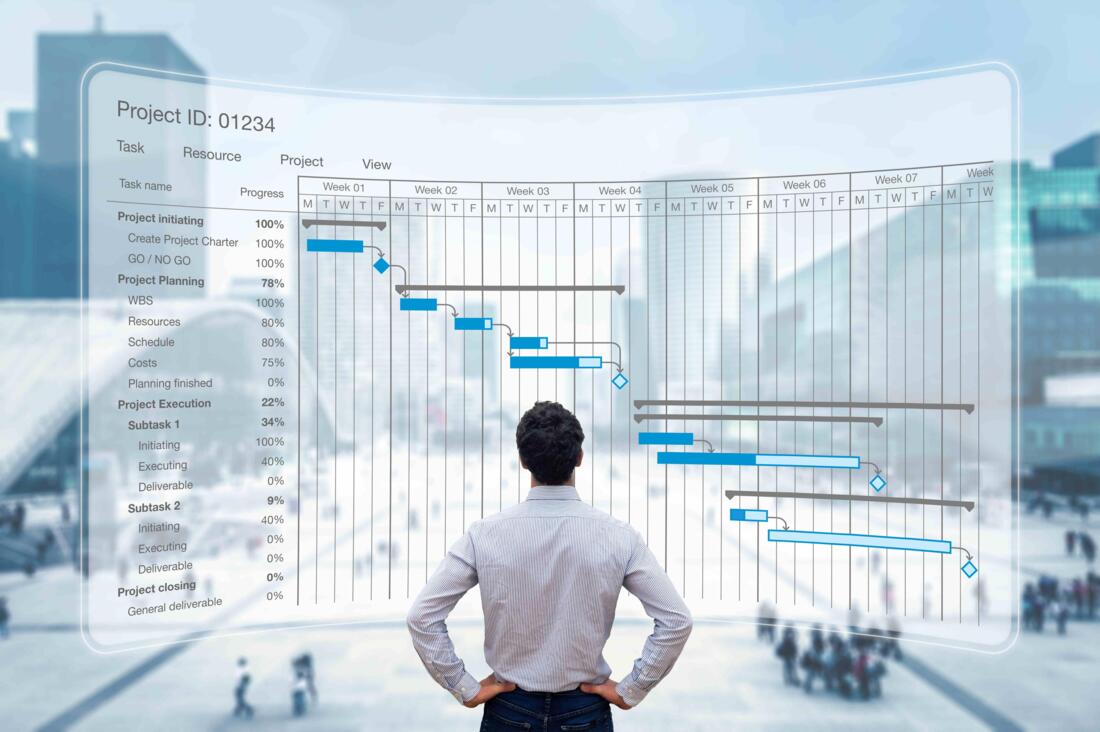Construction management software improves project efficiency by combining scheduling, budgeting, and resource allocation. It automates processes, improves communication, and offers insights based on data. Opting for customizable software can greatly enhance project efficiency, minimize delays, and boost profits for construction companies.
Improving Construction Projects with Software
Improving construction projects and increasing profits are essential objectives for every construction company. Efficient software plays a key role in achieving these goals by uniting different project management processes such as scheduling, budgeting, resource distribution, and communication. State-of-the-art construction management software offers features that support project managers and contractors in managing timelines, controlling budgets, and optimizing resource usage. Through automation of repetitive tasks, the software minimizes mistakes and allows individuals to concentrate on more strategic project aspects, resulting in quicker project delivery and higher profitability.

Choosing the Appropriate Construction Software
Selecting suitable software for your construction endeavors requires grasping the distinctive requirements of your company and the intricacies of your projects. Essential functionalities like real-time collaboration features, cloud-based accessibility, and thorough reporting tools are necessary for keeping information current and enabling efficient communication among stakeholders. Moreover, software that provides customization possibilities can be adjusted to suit the specific needs of various projects, proving to be a valuable resource. By procuring reliable construction management software, firms can enhance project oversight, diminish delays, and lower cost overruns, all of which are vital for maintaining a competitive edge in the construction sector.

Advantages of Construction Software in Planning
Additionally, utilizing construction software supports project management and business expansion. Detailed analytics and forecasting tools enable data-driven decision-making, leading to improved operational efficiency and profitability. Analyzing past project performance and trends helps refine strategies and enhance future outcomes. In the rapidly changing construction industry, leveraging the right technology is essential for business sustainability and growth. Therefore, adopting advanced software solutions is a strategic decision for construction companies seeking to optimize operations and increase profits.
Understanding the Key Features of Construction Management Software
When evaluating construction management software, it is crucial to identify key features that will best serve your projects. Important functionalities include project scheduling, budget tracking, and resource management capabilities. Additionally, the software should offer mobile access to ensure that team members can stay connected and updated on the go. Integrating tools for document management and collaboration can streamline workflows and reduce the chances of miscommunication. Overall, selecting a software solution that encompasses these features will significantly improve operational efficiency and enhance project outcomes.
The Role of User Training in Software Implementation
Implementing construction management software is just the first step; user training is essential for maximizing its benefits. Adequate training sessions for staff ensure that everyone understands how to use the software effectively, which can drastically reduce the learning curve. Training should be tailored to different user roles, as project managers, site workers, and financial analysts may require specific guidance. Moreover, ongoing support and refresher courses can help team members stay updated with software upgrades or new features, ultimately leading to a smoother implementation process and better project results.
Integrating Construction Management Software with Existing Tools
To maximize the benefits of construction management software, integration with existing tools and systems is vital. Many construction companies use various applications for accounting, customer relationship management, and communication. Ensuring that your software can seamlessly connect with these tools can enhance data accuracy and reduce the need for manual data entry. Furthermore, integration allows for a holistic view of projects, enabling better decision-making and resource allocation. In this way, companies can leverage their investments in technology, ensuring that all tools work in harmony to achieve project goals.
Evaluating the Return on Investment for Software Solutions
Investing in construction management software is a significant decision that warrants careful evaluation of the anticipated return on investment (ROI). To assess ROI, companies should consider factors such as increased efficiency, reduced labor costs, and improved project outcomes. Tracking these metrics over time can provide insights into the software's impact on overall profitability. Additionally, calculating potential cost savings from fewer delays and errors can provide a clearer picture of the financial benefits. Ultimately, understanding ROI can help construction firms justify their technology investments and make informed decisions for future projects.
Future Trends in Construction Management Software
The construction industry is continually evolving, and staying ahead of trends in construction management software is essential for sustained success. Emerging technologies such as artificial intelligence and machine learning are set to transform project management. These technologies can offer predictive analytics that forecasts project risks and outcomes based on historical data. Furthermore, advancements in virtual and augmented reality can enhance project visualization, allowing stakeholders to better understand designs and layouts. By keeping an eye on these trends, construction firms can ensure they are equipped with the most innovative tools to remain competitive in the marketplace.
AI-Assisted Content Disclaimer
This article was created with AI assistance and reviewed by a human for accuracy and clarity.